Several animals look like rats but aren’t. With a global population that almost matches the number of humans on Earth (8 billion), it is easy to mistake any of the creatures listed below for a rat. Hopefully, we can rectify that through this article.
Here is a quick look at the animals that look like rats but are not!
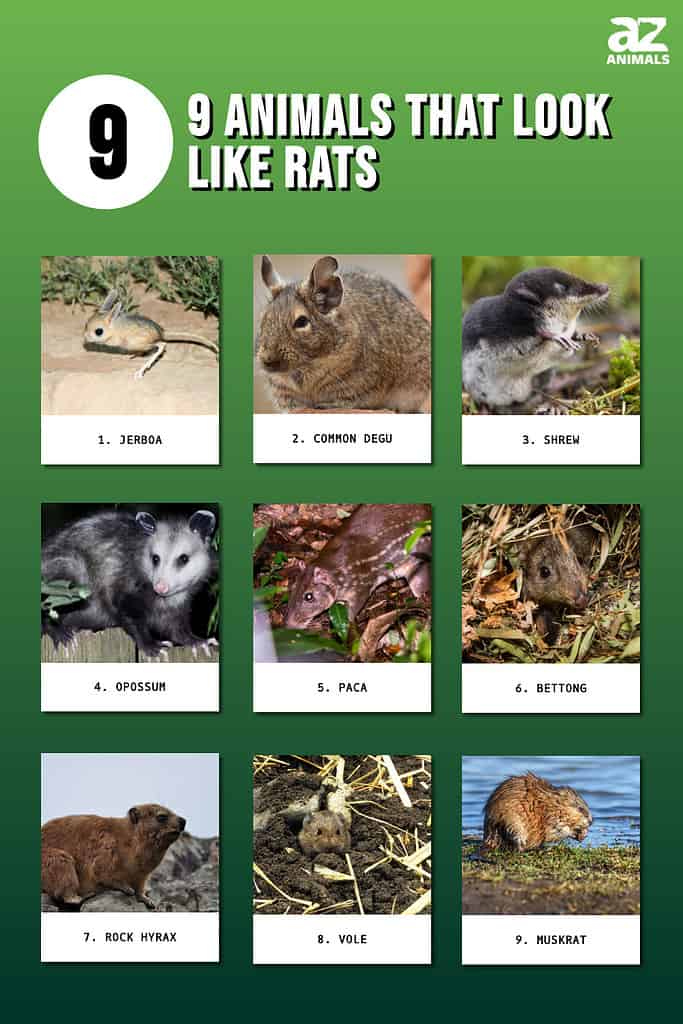
9 Animals That Look Like Rats
Animals that belong to the rodent family share similar features. But there are also clear distinctions that can help you tell them apart.
1. Jerboa
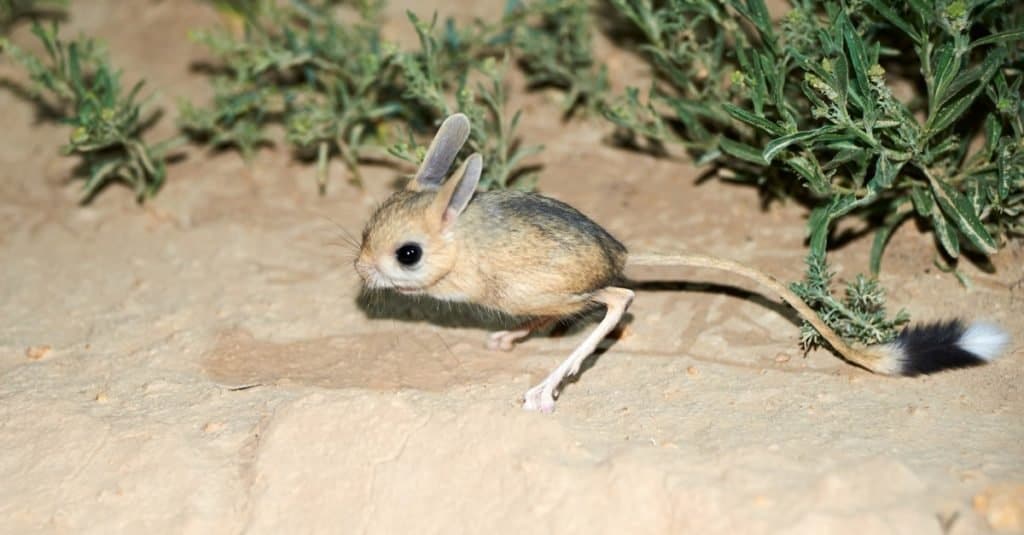
Jerboas are native to the hot deserts of North
Africa
and Asia.
©Yerbolat Shadrakhov/Shutterstock.com
Jerboas have limbs similar to those of a kangaroo. These limbs come in handy whenever they try to escape a predator. There are several species of jerboas. Some of them look like rabbits, while others resemble rats.
Jerboas are native to the hot deserts of North Africa and Asia. These tiny hopping rodents are very fast and have a keen sense of hearing. Thanks to their ears, jerboas can immediately detect danger in the environment.
Their facial structure might initially fool you into thinking they are rats. However, their limb structure, erratic hopping movement, and solitary behavior set them apart.
2. Common Degu

Degus have become very popular among pet lovers.
©Tom Meaker/Shutterstock.com
Described as larger than a hamster but smaller than a rat, common degus are native to South America, primarily to the beautiful country of Chile. Despite the striking resemblance to rats, degus have some distinctive features that can help you identify them.
For starters, they have tufted tails. The fur that covers their heads and backs is yellow and brown. Their belly fur is tan. Another feature that makes them recognizable is the toes. Some degus, like common degus, have claws on all toes, but the fifth looks more like a nail than a claw.
Degus have become very popular among pet lovers these days. That is perhaps because of how low maintenance they are. Degus are not fussy eaters, nor do they require constant care.
3. Shrew

Shrews are geographically widespread.
©Rudmer Zwerver/Shutterstock.com
The shrew is one of the animals on this list that’s not a rodent. The most accurate description for shrews is “mammals that look like moles.” However, without closely examining a shrew, you could easily mistake it for a rat.
Shrews are geographically widespread. You will see a shrew in North to South America, Africa to Asia, Europe, and possibly Australia.
Interestingly, shrews have adapted to different environments. That is why you have aquatic shrews and those that live in the desert. Some species are venomous for their protection. Thankfully, their venoms are not harmful to humans.
4. Opossum

Opossums are omnivores and enjoy a diet that includes meat and plants.
©iStock.com/randimal
It is easy to mistake an opossum for a rat, as they share similar features. However, once these marsupials open their mouths, that rat analogy goes out the window.
In North America, these mammals are known as possums, although they aren’t related to the Australian possums. One distinct feature they have is their ‘full’ jaw, which refers to their unusual dentition. Opossums have 50 teeth in total!
Opossums are omnivores and enjoy a diet that includes meat and plants. The water opossum is the only extant semi-aquatic marsupial. Traits like these show that they are similar to rats.
5. Paca

Pacas prefer settling in thick rainforests close to large bodies of water.
©iStock.com/LeoMercon
Pacas are cute little rodents native to South and Central American countries like Belize, Mexico, and Argentina. However, some species have successfully migrated to parts of northern America. These rodents prefer settling in thick rainforests close to large bodies of water.
Although they look like rats, they have more in common with guinea pigs than rats. However, pacas have distinctive physical attributes. One of the first unique features is the dotted or striped coats.
The absence of a visible tail is another distinctive paca feature. As water-loving creatures, Pacas can stay underwater for up to 15 minutes. Despite their large predator base, which includes jaguars, margays, and ocelots, their population continues to thrive.
6. Bettong
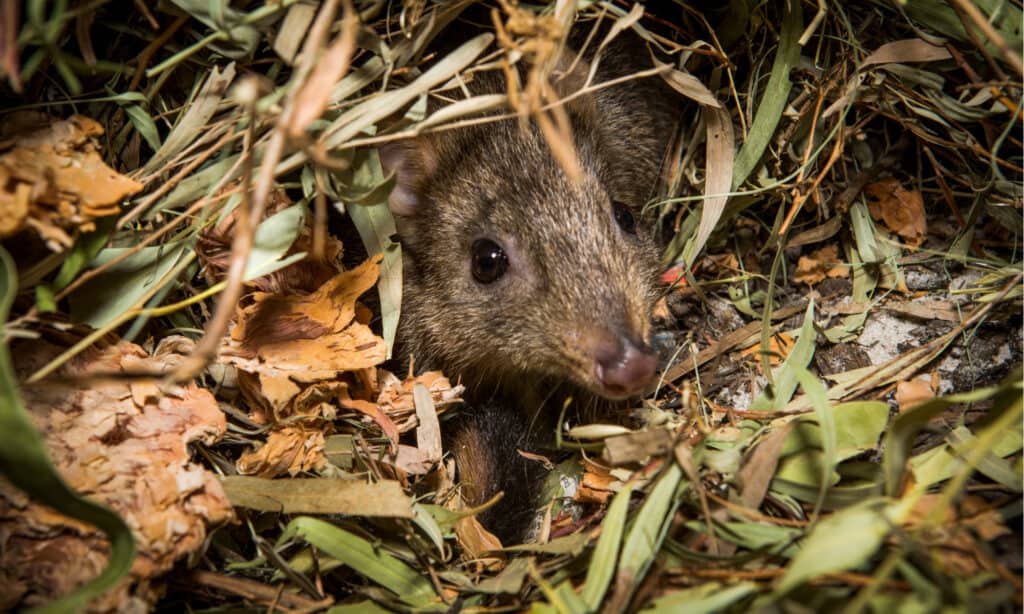
Bettongs are indigenous to Australia.
©GPT Photography/Shutterstock.com
Bettongs are indigenous to Australia. Unfortunately, agricultural encroachment and an increase in the population of feral animals like foxes (their natural predators) and rabbits (their competition for scarce food) led to a severe decline in the bettong population.
Bettongs are ecological engineers, thus having an important role in their habitats. That makes it necessary to ensure that these animals survive and thrive. Measures are currently being put in place to repopulate them in certain parts of Australia.
7. Rock Hyrax
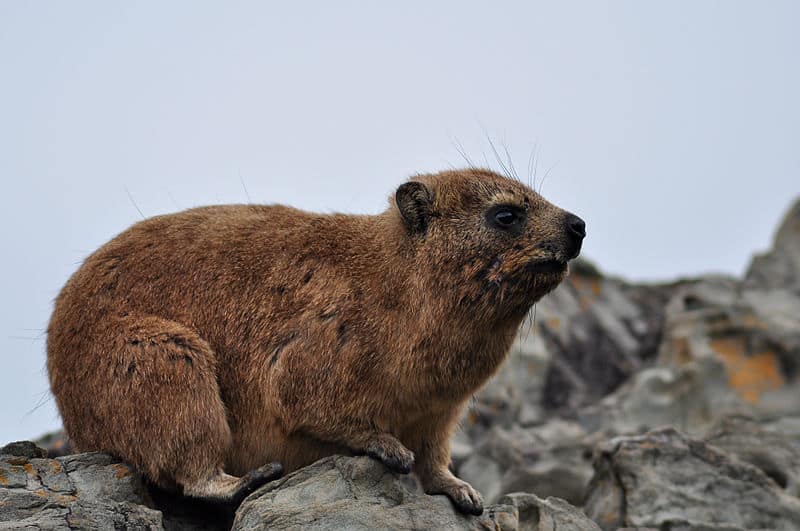
Rock hyraxes love to live in rocky crevices high above sea level.
©Derkarts, CC BY-SA 3.0, via Wikimedia Commons – License
As the name implies, rock hyraxes love to live in rocky crevices high above sea level. They are communal mammals that live in groups of 10 to as many as 80. Countries like Israel, Egypt, Algeria, and Libya are home to these stoutly built mammals. Interestingly, their fur color and density vary depending on where they live.
The squeaky facial features are as far as the resemblance to rats goes. The incisors are sharp and pointed like a tusk. Of course, this alludes to their distant relationship with elephants. Another characteristic they have is the pad on the soles of the feet.
8. Voles
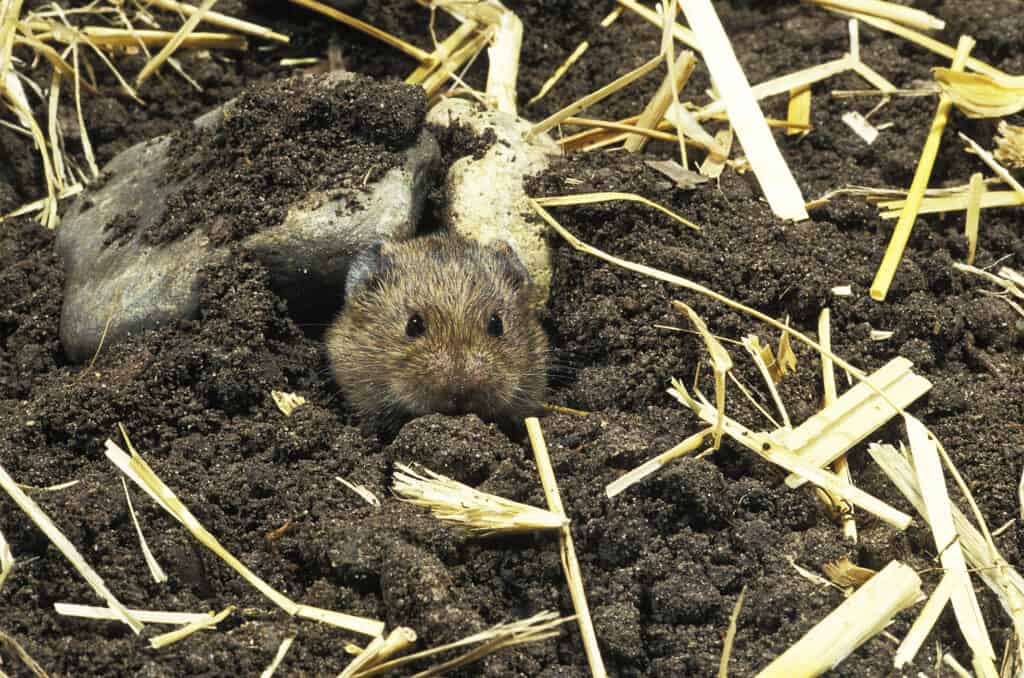
Voles eat anything they can get their hands on, including dead mice.
©iStock.com/slowmotiongli
Voles are small rodents that people often mistake for other smaller creatures like gophers, mice, or rats. Predators of voles include coyotes, raccoons, and bobcats. But despite the formidable list of foes, voles have managed to thrive and grow in number.
These creatures are vegetarians” and can be a nuisance in gardens. On the other hand, rats are more like urban foragers. They eat anything they can get their hands on, including dead mice.
Because of their burrowing behavior, people sometimes mistake them for moles. While some voles are terrestrial and dig burrows under small trees, others, like the water vole, are semi-aquatic and live around water.
Moreover, you can tell voles from rats apart by the form of their ears. The ears of a vole have fur all over them, while the rat’s outer ear region is hairless. Besides, rat ears stick out and are more rounded at the edges.
9. Muskrat
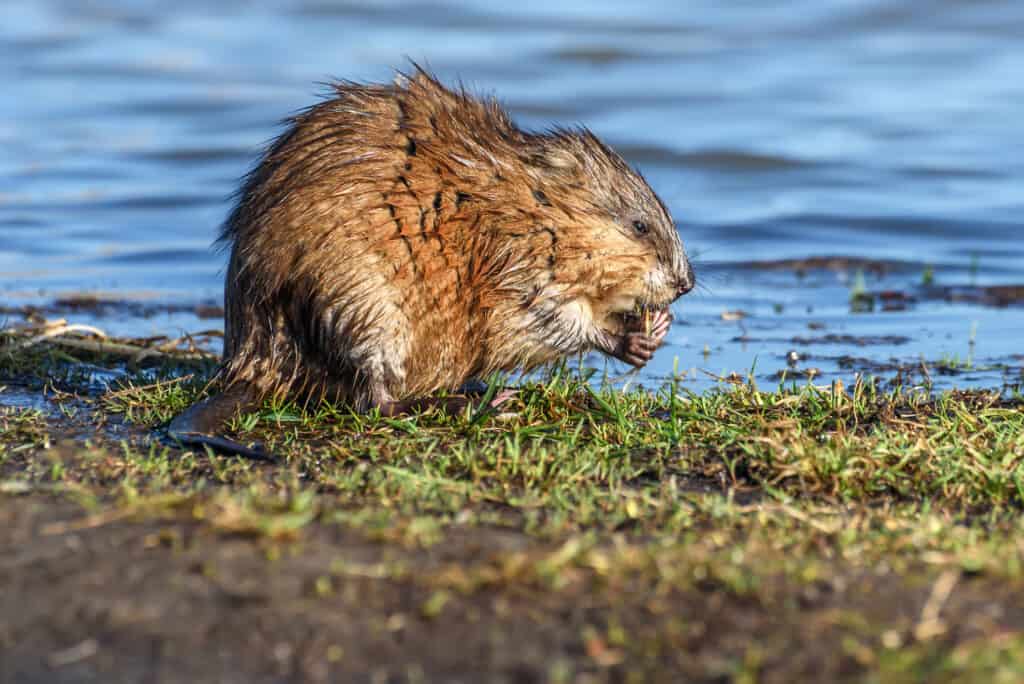
Muskrats are strong swimmers and can swim underwater for up to 17 minutes.
©iStock.com/Iri_sha
Despite having the word “rat” in their name, muskrats are anything but that. Experts say that in certain parts of North America, like Canada, many ‘so-called’ rat sightings actually involved muskrats. That is how similar to rats they are!
Muskrats are strong swimmers and can swim underwater for up to 17 minutes. Although native to North America, they were introduced on other continents. Because of their size, fur or pelts, muskrats are among the most trapped rodents compared to the other animals on this list.
Up Next:
The photo featured at the top of this post is © iStock.com/galinast
Sources
- VIVO Pets, Available here: https://vivopets.com/degus-vs-rats/
- Wikipedia, Available here: https://en.m.wikipedia.org/wiki/Opossum
- Bush Heritage Australia, Available here: https://www.bushheritage.org.au/species/bettongs
Thank you for reading! Have some feedback for us? Contact the AZ Animals editorial team.






